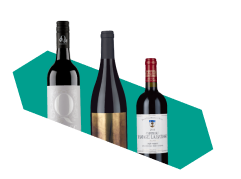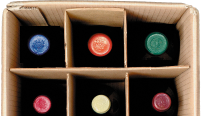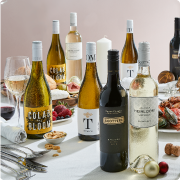Temperature plays an important role in the aroma and flavour of wine, transforming an ordinary glass of red, white or rosé into one of the most delicious things you’ve tasted. Enjoying wine at the correct temperature can elevate it – but if served at the wrong temperature, your wine could taste dull, bitter and bland.
To avoid this and experience wine at its best, our guide to wine temperature is here. This covers everything you need to know, including the different styles of wine and how best to store them. Whatever wine you pick, we’ve got you covered.
Red wine temperatures
Red wine temperature will vary depending on its style, but the average sweet spot across all red wine styles is between 12-18°C.
Here’s a handy breakdown:
Full-bodied reds – Shiraz, Cabernet Sauvignon, Malbec and some Rioja wines are best served slightly below room temperature – between 15-18°C.
Medium-bodied reds – Merlot, Sangiovese, Cabernet Franc and Grenache need to be served slightly cooler, around 13-15°C.
Light-bodied reds – Pinot Noir, Gamay and Nebbiolo are best served after 30 minutes in the fridge, at between 12-13°C.
Lighter red wines thrive at a lower temperature, highlighting their easy-drinking style, refreshing acidity and delicate flavours. The cooler temperature also makes them a thirst-quenching treat during the sizzling summer months.
Fuller-bodied red wines can be served slightly warmer to fully release their complex aromas and flavours. A warmer temperature also softens grainier tannins, contributing to a wine’s velvety texture.
More robust reds can benefit from decanting before serving. This allows them to slowly and consistently come up to room temperature, ensuring you get to enjoy it fully as the winemaker intended.
It’s key to get your red wine temperature right. If you serve a full-bodied red wine too cold, it can taste thin and one-dimensional – the opposite of how a full-bodied red wine should be. If you serve a light-bodied red wine too warm, its delicate flavours can become bitter and confusing, masked by the alcohol and acidity.
Explore our extensive collection of red wines to discover your ideal bottle.
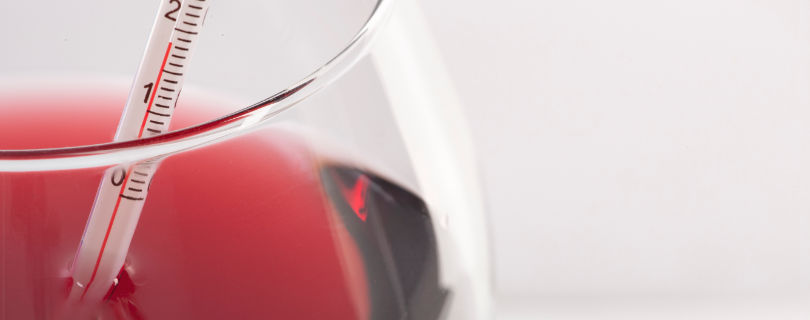
Rosé wine temperatures
When it comes to its combination of body and aromas, rosé wine is somewhere between white and red wine, and it’s as delicious as it looks. Like red and white wines, rosés also come in a variety of styles.
The lightest are those from France’s Provence region, and the fullest are made from Spanish Garnacha grapes.
These are the best temperatures for serving different styles of rosé:
Full-bodied rosés (Shiraz, Garnacha) are best served below room temperature – around 13°C.
Medium-bodied rosés (Rosado, Tavel, White Zinfandel) need to be served even cooler, between 8-12°C.
Light-bodied rosés (Provence) are best served after a long chill in the fridge at 7°C.
Not only does the chill add to the rosé’s refreshing, easy-drinking character, but it can also lift those subtle, juicy tropical and red fruit notes.
Before serving, chill your rosé of choice in the fridge for a minimum of 30 minutes. Although an ice-cold glass of rosé sounds mouthwatering on a hot summer day, over-chilling your pink wine can ruin it, so be careful. If served too cold, its delicate, delightful flavours and aromas can be muted.
There’s no need to chill your bottle in between pours, either. Letting it sit on the table to warm slightly can help unlock its hidden depths and subtler notes.
In the mood for something pink? Shop our range of premium rosé wines.

White wine temperatures
Just like red and rosé wines, white wines have their own ideal serving temperatures depending on the style. White wines range in style from light and crisp to full and luscious.
Here’s an easy serving temperature breakdown for white wines:
Full-bodied whites (Viognier, oaked Chardonnay, white Rhône blends) can be served the warmest – between 10-13°C.
Medium-bodied whites (Sauvignon Blanc, Pinot Grigio, Chenin Blanc, unoaked Chardonnay) flourish in the glass between 8-9°C.
Light-bodied whites (Riesling, Albariño, Gewürztraminer) thrive when well-chilled to around 7°C.
Light-bodied wines should be served at cool temperatures to showcase their vibrant acidity better and highlight their lively citrus notes. This could be linked to the fact that the grapes used to create lighter whites also thrive in cooler climates. Full-bodied styles, like an oaked Chardonnay, have more texture, depth and complex aromas, meaning a warmer serving temperature is needed to appreciate them fully.
Before serving any style of white wine, a stint in the fridge is needed to bring it to the perfect serving temperature. Fuller whites should only need about 20-30 minutes, medium-bodied styles can benefit from 45 minutes, while the lightest styles could be in there for over an hour.
In the mood for a white wine? Browse our selection of white wines today.

Sparkling wine temperatures
Sparkling wine must be served chilled to enhance its bubbles, crisp acidity and lighter, more delicate fruit notes.
But not all sparkling wines should be served the same:
Prosecco is at its most delicious when ice cold – around 3-7°C
Champagne can be served slightly warmer, between 4-7°C.
Vintage Champagne is more complex, so it needs to be served a little warmer to fully unlock its depth at around 6-10°C.
Cava and its fine, mousse-like texture also benefits from being served between 3-7°C.
Lambrusco and Sparkling Shiraz should be served slightly chilled to fully unlock their juicy red fruit notes – around 7-13°C.
Before serving, chill your sparkler of choice for 2-3 hours in a fridge or 20 minutes in an ice bucket. Unlike rosé, you’ll need to keep your sparkling wine chilled between pours. While an ice bucket is a classy and convenient option, if you don’t have one on hand, never fear. Keeping it in the fridge once open would also work well.
Looking for the right bubbles for your next big occasion? Shop our full range of premium sparklers from across the world.
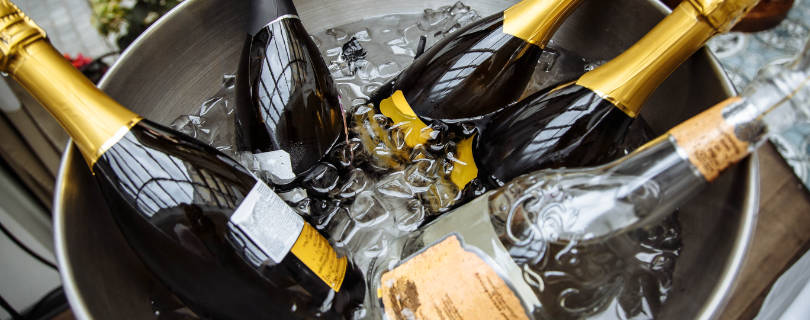
How do I measure red, rosé and white wine temperatures?
Getting your wine’s serving temperature right is key to getting the most out of it. Many guides use the term ‘room temperature’ as a serving suggestion, but that can vary depending on where you are – especially in Australia.
So, how do you know you’re getting it right? If you forget what our expert guide says, remember these broad guidelines:
The most robust reds shouldn’t be served warmer than 20°C.
The most robust whites and rosés shouldn’t be served over 13°C.
The creamiest sparkling wine shouldn’t be served over 10°C.
If these broad guidelines don’t satisfy your need for exact details, a wine thermometer could be the perfect self-gift. Easy to use and relatively cheap, you could use one to nail your wine’s ideal serving temperature every time.
The best storage temperature for wine
Even storage temperature can affect your wine of choice. A constant temperature of around 13°C is ideal for all types of wines, and if the bottle you’ve selected is under cork, it is best stored on its side (to avoid the cork drying out).
If you keep your wine somewhere too warm, you could risk spoiling it before you even have the chance to pour a glass.
Find your new favourite in our wide selection of premium red, whites, rosés and sparkling wines.


